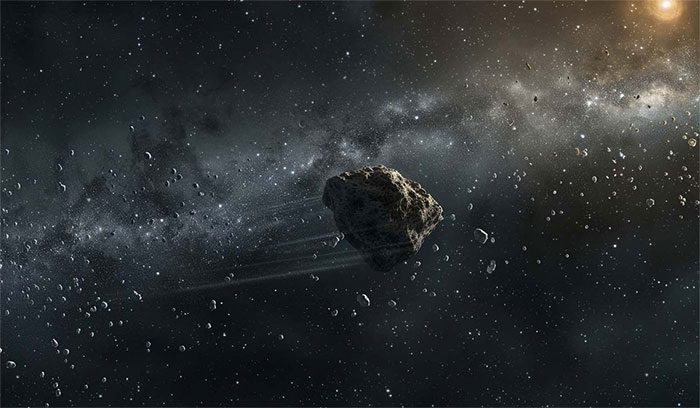A type of elusive object may exist in far greater numbers than previously thought, and these are the spacecraft carrying life.
A research team led by astrophysicist Darryl Seligman from Michigan State University (USA) has discovered 7 new elusive objects, known by the nickname “dark comets.”

Illustration of an object called “dark comet” – (Photo: NICOLE SMITH/MICHIGAN STATE UNIVERSITY).
Dark comets possess characteristics of asteroids yet behave similarly to comets, making it difficult to clearly define them as either of the two basic types of astronomical objects.
The seven newly discovered dark comets have increased the total number of dark comets known to humanity to 14. And that is not all.
American scientists believe they are more numerous than we think, comprising two types and playing a very special role in our world today.
“These objects represent a class of entities in the solar system that may have provided Earth with the essential materials for the development of life, such as volatiles and organics,” Dr. Seligman stated.
Since dark comets do not have tails like regular comets, the clearest evidence to identify them is the acceleration of these objects as they move through space.
Astronomer Davide Farnocchia from NASA’s Jet Propulsion Laboratory (JPL), a co-author, mentioned that the forces causing these objects to accelerate in space without the phenomenon of sublimation could be gravitational forces or the Yarkovsky effect.
The Yarkovsky effect is a change in an object’s orbit caused by differences in sunlight and temperature. When an object is exposed to sunlight, part of the light energy is absorbed, heating the object’s surface and leading to thermal radiation in the form of photons.
By analyzing the reflectivity and orbits, the authors also discovered that our solar system contains two different types of dark comets.
One type resides within the orbit of Mars. They tend to be smaller, under several dozen meters, with compact and circular orbits around the sun.
The other type is somewhat more chaotic. Their orbits are elongated ellipses, moving out near Jupiter and sometimes coming closer to the sun than Mercury.
They are also larger than the first type, reaching sizes of up to hundreds of meters.
Furthermore, it is very likely that dark comets from other star systems have also visited us, with ‘Oumuamua – which has sparked debate over whether it is an asteroid or an extraterrestrial spacecraft – being a notable example.





















































